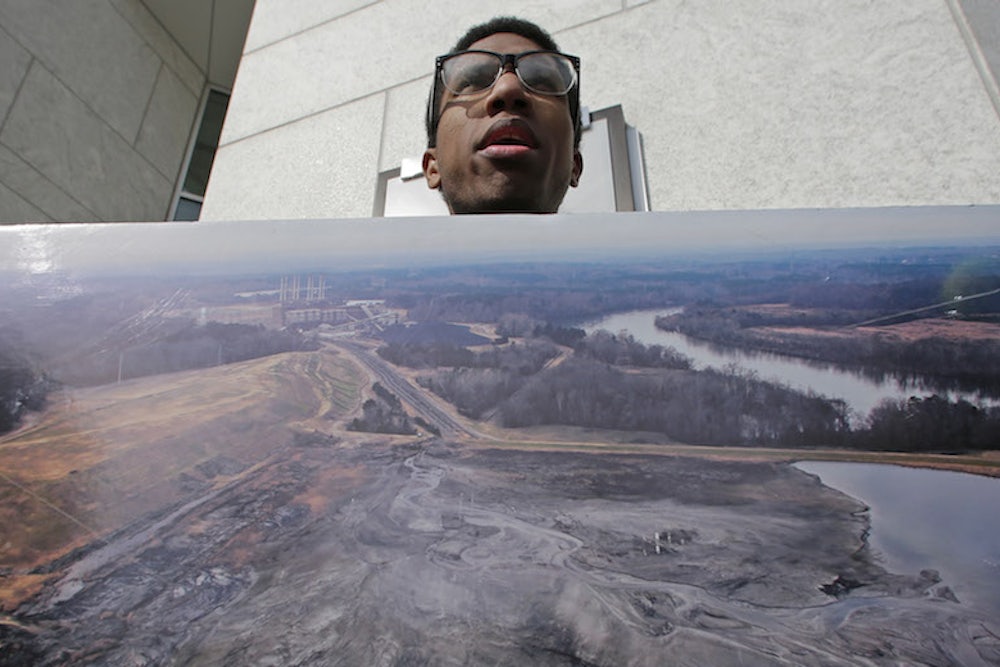When power plants burn coal, they’re left with a coal ash residue containing arsenic, mercury, lead, and selenium. Until Friday, there were no federal standards for utilities to dispose of it. Utilities produce more than 100 million tons of the stuff annually, and what’s not recycled into concrete is spread across the country in 1,400 dry and wet ponds. The problem, environmentalists say, is that the coal ash is sometimes dumped into unlined and open-air pits and seeps into the ground, gets picked up by the wind, and occasionally spills into rivers and streams.
For the first time, the Environmental Protection Agency has set a minimum baseline for coal-ash disposal that leaves enforcement to states. Ponds will now have to be inspected regularly and monitored for groundwater contamination; those that are leaky will be shut down. New ponds will now have to be lined and located away from sensitive areas like earthquake zones and wetlands. Otherwise, the EPA doesn't address what to do with inactive ponds. Vox's Brad Plumer points out that the EPA's regulations would not have applied to Duke Energy's Dan River site, where a closed-down pond leaked 39,000 tons of coal ash into the river in February.
“While EPA’s coal ash rule takes some long overdue steps to establish minimum national groundwater monitoring and cleanup standards, it relies too heavily on the industry to police itself," said Eric Schaeffer, executive director of the Environmental Integrity Project and former EPA director of civil enforcement.
Environmentalists hoped the EPA would label coal ash as a hazardous waste, requiring utilities to dispose of it in facilities that are lined and sealed and far away from bodies of water. They've been asking the EPA to set stricter requirements for years—ever since the coal ash spill in Kingston, Tennessee in 2008. The EPA labeled it as a solid waste instead, meaning coal ash ponds are subject to requirements similar to those controlling household waste.
“It’s stunning that 21st century America would store millions of tons of industrial waste in such a primitive and outmoded way,” Senior Attorney Frank Holleman of the Southern Environmental Law Center said. “This was a lost opportunity on the part of the EPA and national government to protect rivers and lakes.”
“While EPA’s coal ash rule takes some long overdue steps to establish minimum national groundwater monitoring and cleanup standards, it relies too heavily on the industry to police itself," said Eric Schaeffer, executive director of the Environmental Integrity Project and former EPA director of civil enforcement.
Any stricter regulations will be left to state legislatures—and environmental activists. But utilities also maintain close ties with state lawmakers, making this unlikely. Prior to Duke Energy's coal ash spill earlier this year, North Carolina Governor Pat McCrory held stock in the company, didn’t disclose this, and later sold it. Then North Carolina passed what was called the most "sweeping" coal ash legislation in the country that still left a few glaring loopholes for Duke Energy. North Carolina should have been a reminder of why a strong federal standard is so important.
“This rule is going to ensure the structural weaknesses that led to failure in Kingston and Dan River are assessed before the damage is done," EPA Administrator Gina McCarthy said to reporters Friday afternoon. There isn't much reason to believe her.
